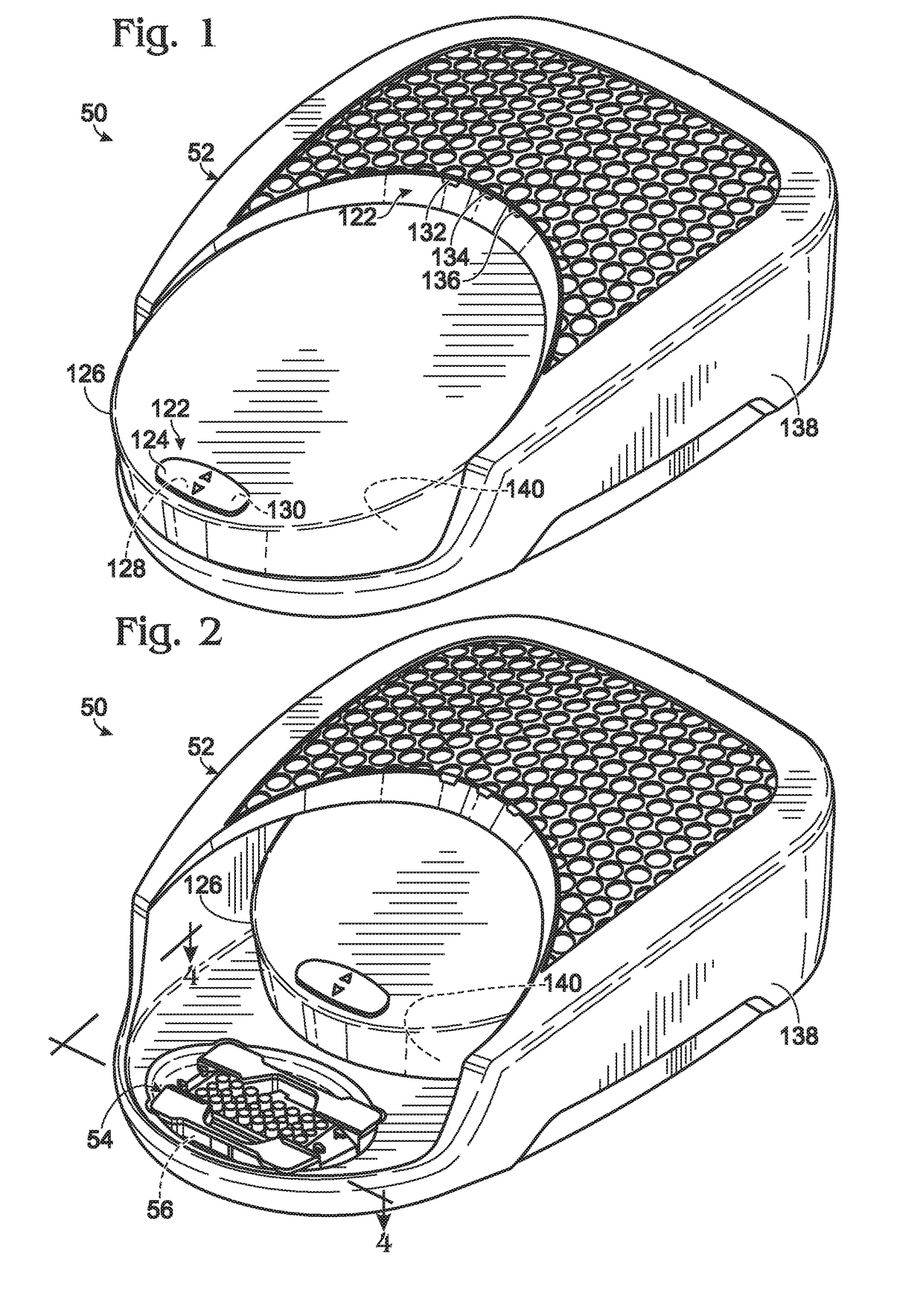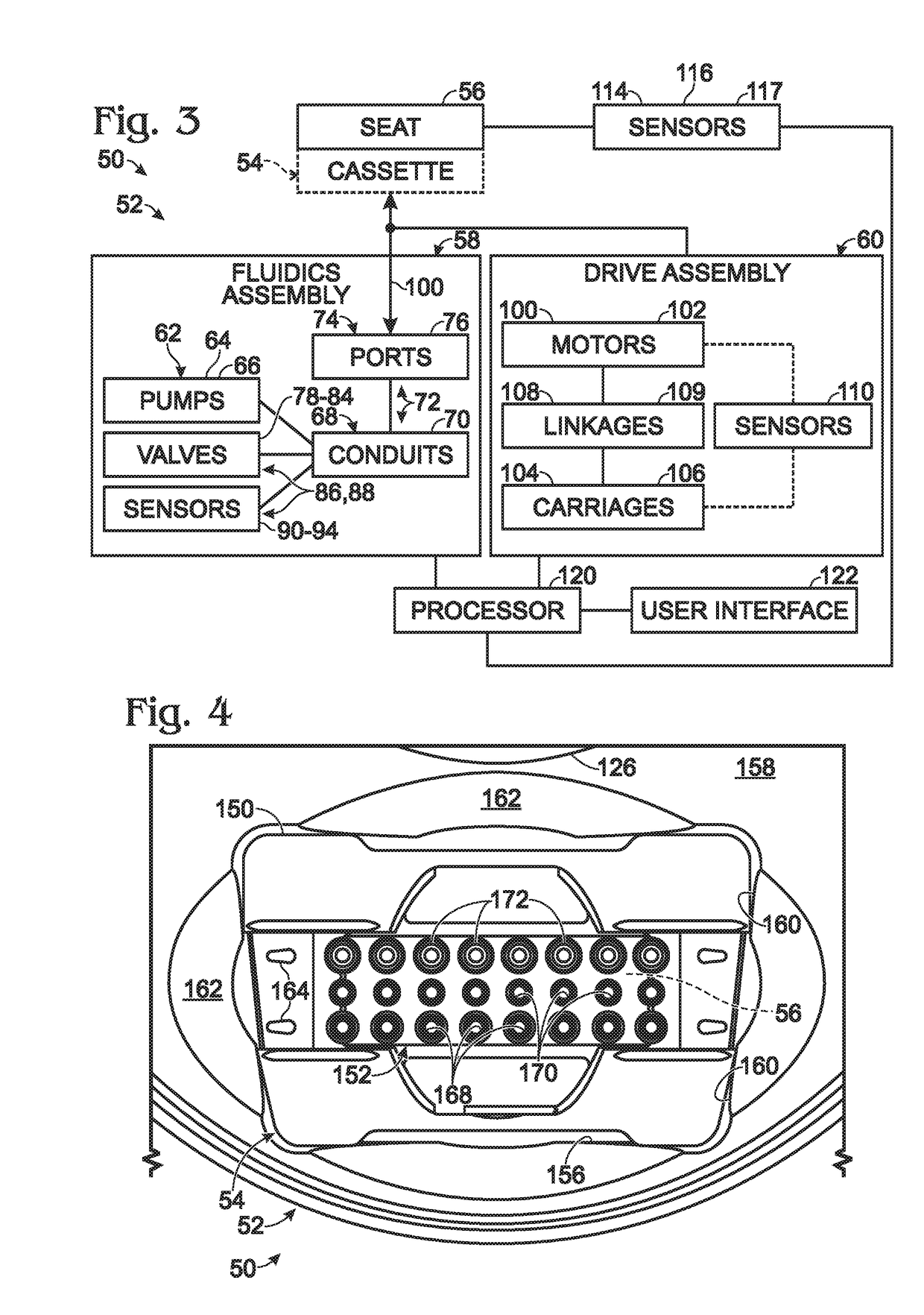System for generating droplets with pressure monitoring
a technology of droplet generation and monitoring system, which is applied in the direction of laboratory glassware, instruments, reagent containers, etc., can solve the problems of waste rather than testing, large portion of sample not being incorporated into the system, and inefficient use of samples by available systems
- Summary
- Abstract
- Description
- Claims
- Application Information
AI Technical Summary
Benefits of technology
Problems solved by technology
Method used
Image
Examples
Embodiment Construction
[0066]The present disclosure provides a system, including methods, apparatus, and kits, for forming emulsions. The system may include an instrument and a microfluidic chip received by the instrument. The instrument may apply pressure to prospective emulsion phases held by the chip, to drive formation and collection of emulsions in the chip. In some embodiments, the instrument may stop applying pressure to the chip when a change in pressure meeting a predefined condition is detected by the instrument. The change may indicate that an endpoint of droplet generation has been reached.
[0067]An exemplary method of emulsion formation is provided. In the method, pressure may be applied to a microfluidic chip holding prospective emulsion phases, to drive droplet formation and collection of emulsions in the chip. The pressure may be monitored for a change that meets a predefined condition. Application of the pressure may be stopped when the change is detected.
[0068]Another exemplary method of ...
PUM
| Property | Measurement | Unit |
|---|---|---|
| inner diameter | aaaaa | aaaaa |
| inner diameter | aaaaa | aaaaa |
| inner diameter | aaaaa | aaaaa |
Abstract
Description
Claims
Application Information
 Login to View More
Login to View More - R&D
- Intellectual Property
- Life Sciences
- Materials
- Tech Scout
- Unparalleled Data Quality
- Higher Quality Content
- 60% Fewer Hallucinations
Browse by: Latest US Patents, China's latest patents, Technical Efficacy Thesaurus, Application Domain, Technology Topic, Popular Technical Reports.
© 2025 PatSnap. All rights reserved.Legal|Privacy policy|Modern Slavery Act Transparency Statement|Sitemap|About US| Contact US: help@patsnap.com



